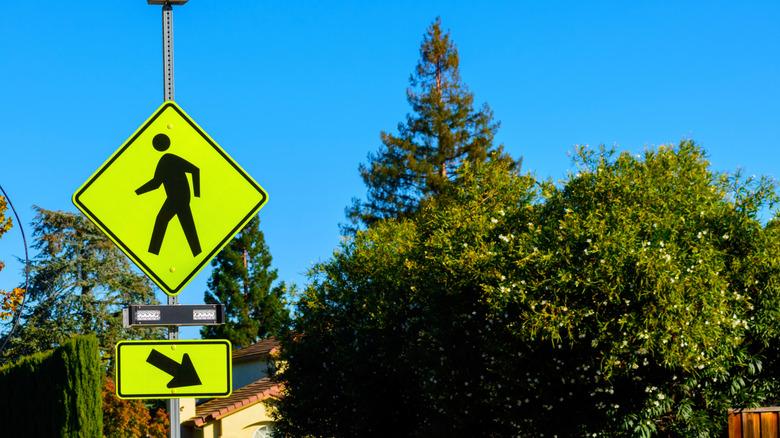California Daylighting Law: How AB-413 Aims To Help Save Lives On The Streets
California's AB-413 took effect statewide as a law on New Year's Day, prohibiting cars from parking within 20 feet of both marked and unmarked crosswalks. If there's a curb extension, it's 15 feet. AB-413 referred to as the "daylighting law" because it aims to help drivers see pedestrians at crosswalks. When a car is parked at a corner, vehicles making a right turn have a harder time seeing pedestrians crossing the street, leading to avoidable injuries and fatalities. The more visibility there is for pedestrians, the fewer the pedestrian-related accidents, which is California's hope with this law.
If you struggle with picturing 20 feet, the average length of a full-size pickup truck is 19 to 22 feet, so imagining a GMC Sierra 2500 should help if you need to park near a crosswalk. California's governor signed the bill back on October 10, 2023, but before Jan. 1, 2025 law enforcement was prohibited from issuing citations or other penalties besides a warning unless the area was clearly marked.
This practice is continuing for the first two months of the new year, letting drivers get accustomed to the daylighting law. As soon as March 1 hits, though, law enforcement will be issuing citations for the violation. There will be a $65 fine, plus a $12.50 administrative fee. No more free pass.
Pedestrian visibility saves lives
There are some bizarre driving laws you've never heard of across the United States – one U.S. state doesn't even have a law requiring adults to wear a seatbelt – but daylighting laws are important and should extend beyond the 44 states that now have them. California's pedestrian fatality rate was nearly 25% higher than the national average when AB-413 passed, according to the bill's sponsor. The law should help improve that percentage, since studies have shown that providing better visibility at crosswalks reduces pedestrian injuries considerably.
The U.S. Department of Transportation cites three studies that show visibility enhancements, including lighting, signs, and pavement markings, reduce the likelihood of anyone using a crosswalk being struck by a vehicle. High-visibility crosswalks have become more common in the middle of roads (as opposed to an intersection), with more visible line patterns, including zebra, ladder, or continental crosswalk markings rather than simple parallel lines. They're more visible from a greater distance than conventional crosswalks, and they cut pedestrian injury crashes, says the DOT. So does simply improving the lighting at intersections.
Creating a mandatory space of 20 feet where vehicles aren't allowed to stop, stand, or park adds another visibility enhancement at crosswalks that will further improve safety. Furthermore, local jurisdictions can use that space for bicycle parking if they wish, saving space while still maintaining visibility.

